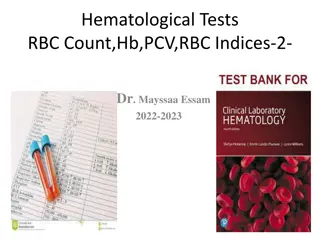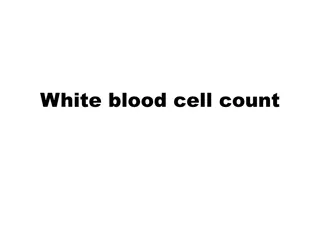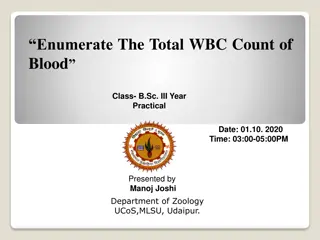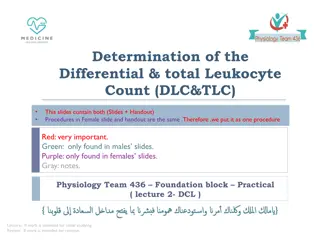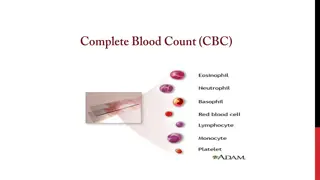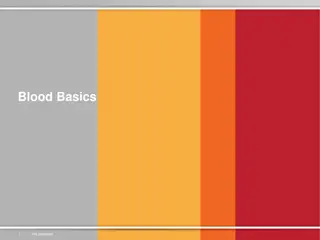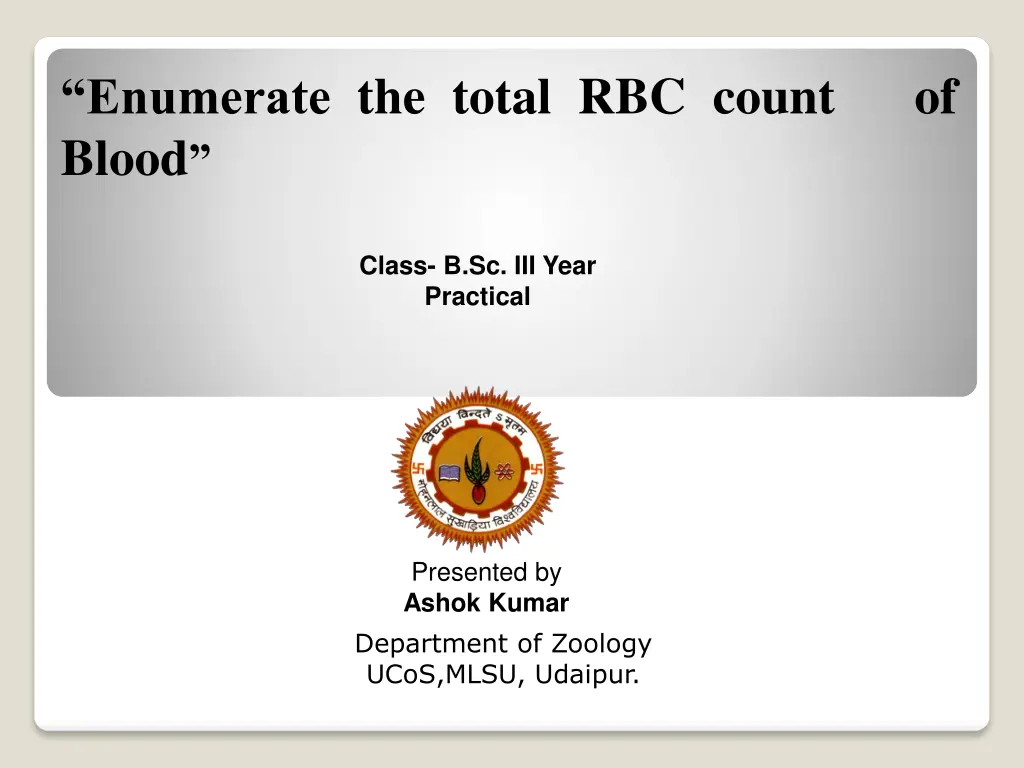
Estimation of RBC Count in Blood | Practical Procedure and Calculation
Learn about the procedure to estimate the total RBC count in blood, using a haemocytometer and related equipment. Understand the importance of RBCs in the body, normal ranges, and the calculation method for determining RBC count per cubic mm of blood.
Download Presentation

Please find below an Image/Link to download the presentation.
The content on the website is provided AS IS for your information and personal use only. It may not be sold, licensed, or shared on other websites without obtaining consent from the author. If you encounter any issues during the download, it is possible that the publisher has removed the file from their server.
You are allowed to download the files provided on this website for personal or commercial use, subject to the condition that they are used lawfully. All files are the property of their respective owners.
The content on the website is provided AS IS for your information and personal use only. It may not be sold, licensed, or shared on other websites without obtaining consent from the author.
E N D
Presentation Transcript
Enumerate the total RBC count of Blood Class- B.Sc. III Year Practical Presented by Ashok Kumar Department of Zoology UCoS,MLSU, Udaipur.
Principle:- RBC stands Red Blood Corpules. Rbcs are major cells of blood component, which make a great part of blood. These play an important role in gases exchange in body. The normal ranges of Rbcs: In male- 4.7 to 6.1 million cells/ mcL. In Female- 4.2 to 5.4 million cells/ mcL. The increased and decreased number of Rbcs gives many interpretations about diseases as well as deficiencies.
Estimation of RBC Requirements-Haemocytometer, sterilized pricking needle, Rbc counting Pipette, Compound microscope and Hayem s diluting fluid (NaCl-1% , Na2SO4-2.5% and HgCl2-2.5%), coverslip etc. Procedure- 1. Clean and the mixing pipette. 2. Sterilized your middle finger and Prick the finger and blood flows freely, Don t squeeze. 3. Suck the blood in pipette up to 0.5 ml mark and immediately mix it with Hayem s diluting fluid by sucking it up to 101 mark. 4. Bring counting scale into the focus under objective under microscope. 5. Count cells in 16 squares in five different part of the field.
Calculation- These may be done in the following manner- No. of RBC per cubic mm- Number of cells counted x Dilution x 400 No. of small squares counted x Depth of chamber Suppose, five smaller square or 80 smallest contain A+B+C+D+E RBCs One cubic mm of blood will contain= A+B+C+D+E x 400 x 10 x 200 80 Or A+B+C+D+E x 10000 RBC.




